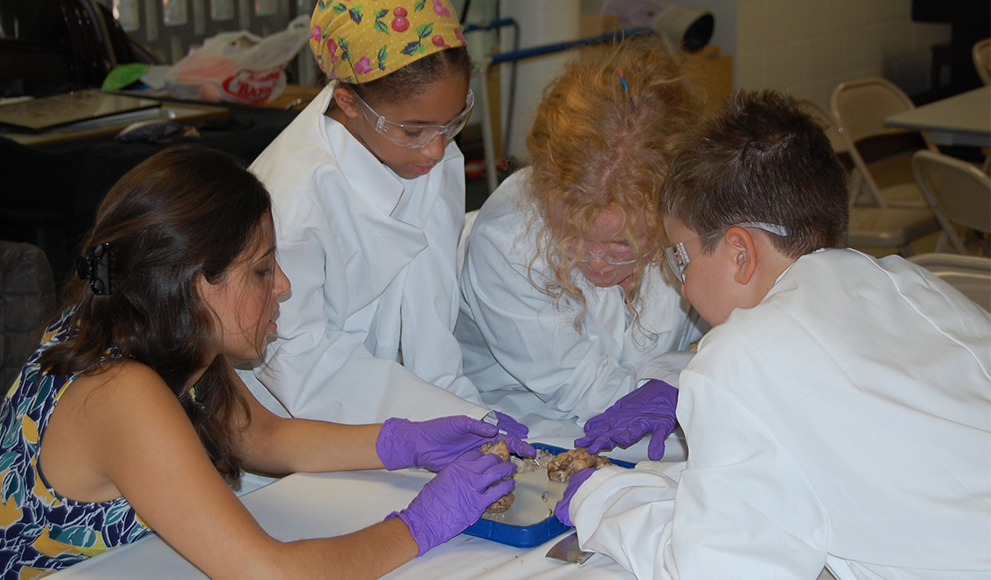Neuroscience Students Demonstrate An Impressive Display of Academic Versatility

Leila Elabbady '16 and Zena Chantila '16, both neuroscience majors, traveled to MetroWest Jewish Day School in Framingham, Mass., earlier this month where, in what can only be called an impressive display of academic versatility, they spent the morning presenting to middle school students on Egyptian and Lebanese culture, and the afternoon dissecting sheep brains with fifth graders.
"I am a big advocate of science outreach and teaching children how amazing and beautiful science can be," said Chantila. "In addition to performing brain dissections, Leila and I gave a cultural presentation on the Middle East…I am Lebanese and Leila is Egyptian, so we presented on aspects of our own cultures and Arab culture in general."
"It was a wonderful demonstration of how multifaceted our students are," said Marc Tetel, Class of 1966 Associate Professor of Neuroscience. "Leila and Zena connected with the middle school students by talking to them about the history, pop culture and religions of Egypt and Lebanon. Twenty minutes later, they were neuroscientists and dissecting sheep brains with 5th graders, showing them the parts of the brain involved in vision."
In the first presentation they shared photos of some of their favorite musical artists who are also popular in these Mideast countries, discussed what it was like to grow up in the Middle East, and wove in information on the history and religions of Egypt and Lebanon. In the second presentation, they discussed the value of studying animal brains and how this research enables scientists to learn more about brain diseases in humans like Parkinson's and Alzheimer's disease.
"As a kid, it can be easy to think that science is only memorizing facts, but that is far from the truth," Chantila said. "Performing the brain dissections with kids was so wonderful, because they get to see for themselves and explore neurobiology in a hands-on way. It was such a wonderful experience to be able to explore with the students and teach them about how our brain works and what if actually looks like and how it is structured."
Elabbady said she was happily surprised by how interested and attentive all of the students were. With the fifth graders, she said, "It was also really nice do a hands on demonstration…because you could see their faces light up as they held the sheep brains and exclaimed 'Look at me, I'm holding a brain in my hands!'" With the middle school students, she said, "the kids were asking lots of questions and engaged throughout."
Rav-Hazzan Scott M. Sokol, Ph.D, Head of School at MWJDS, said he was greatly appreciative of the efforts of the young scientists.
"Leila and Zena provided an outstanding example of our central vision at MWJDS, namely that students can be serious about science (or any other academic subject) and not lose other aspects of their identity, such as culture or religious heritage," Sokol said. "As someone who is both a neuroscientist and Jewish educator/clergy, I found this message personally affirming. We are so grateful for the partnership we have forged with Wellesley College these past few years, and look forward to more opportunities for joint learning."
Tetel said, "Leila and Zena exemplify the value of a liberal arts education. Going from talking about the popularity of Shakira in Lebanon to brains and Alzheimer's takes a special set of skills."
